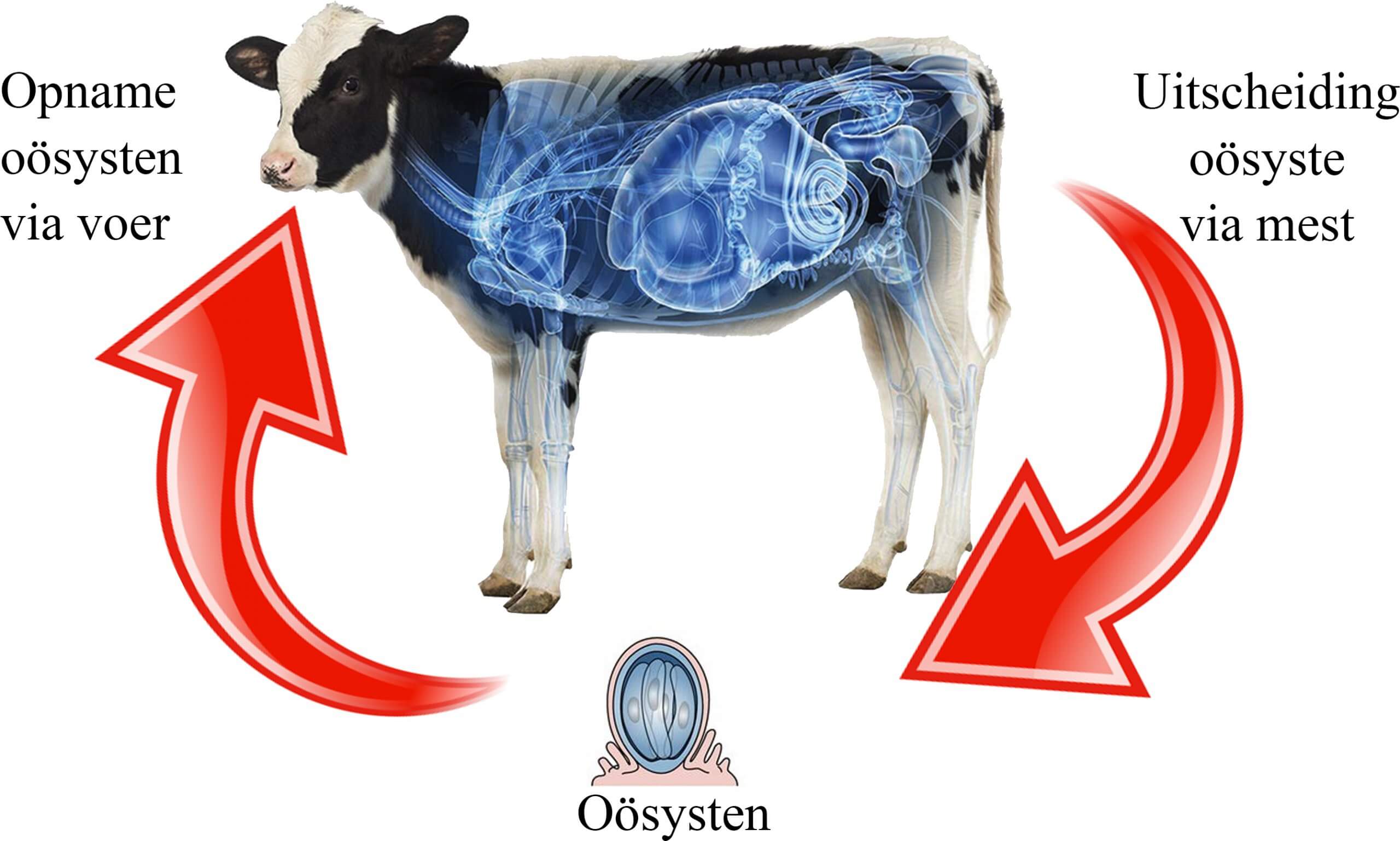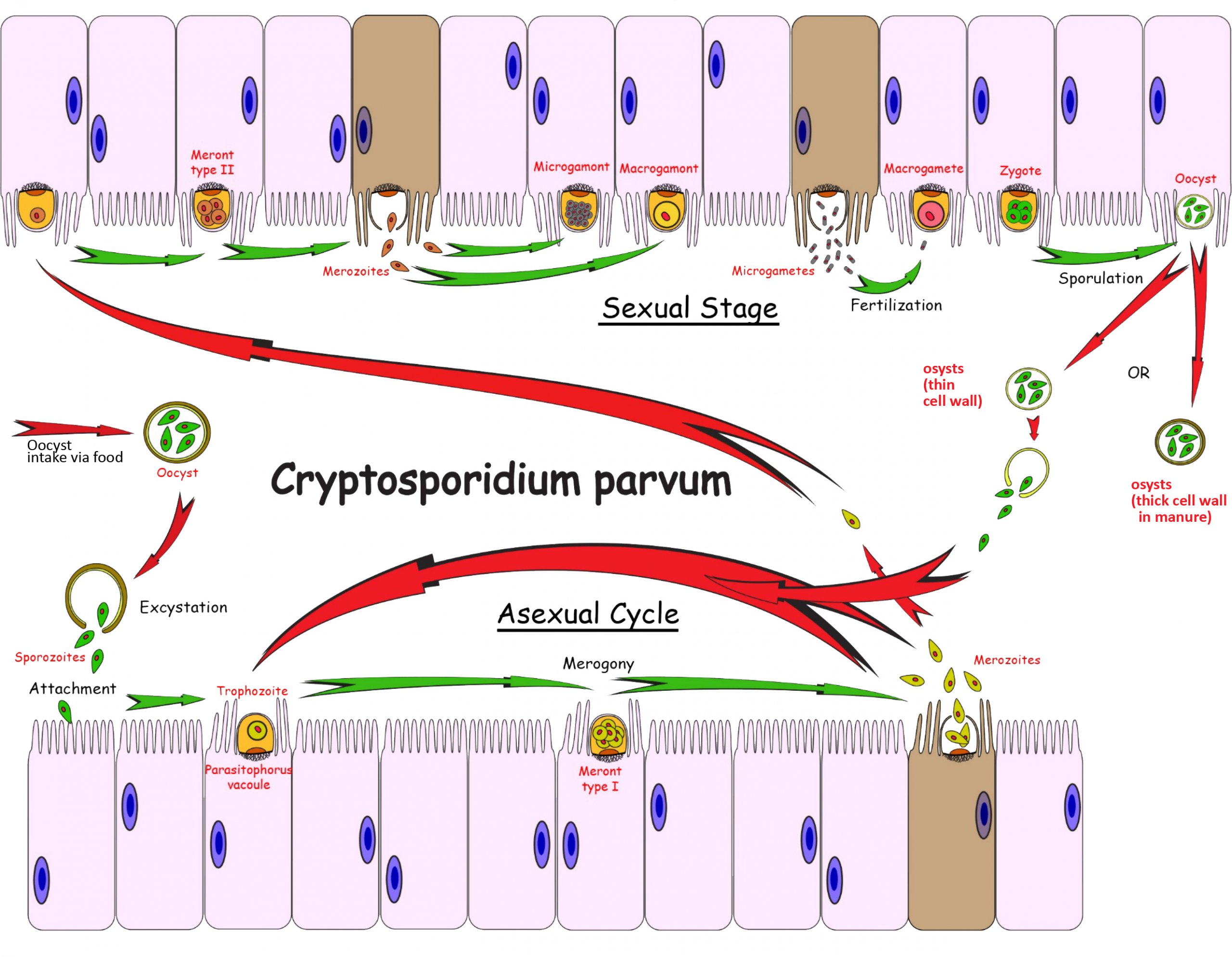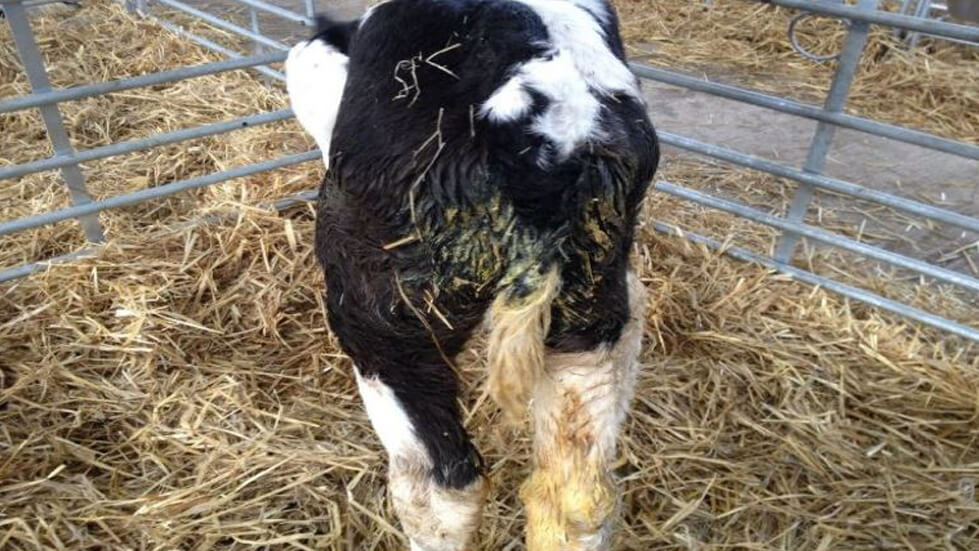Tackling crypto in calves in 5 steps
Cryptosporidiosis is caused by Cryptosporidium spp. The most common type is C. parvum. Dutch research (2007) has shown that Cryptosporidium parvum is present on 57% of Dutch farms. Other research revealed that Cryptosporidia are involved in 60% of the cases of diarrhoea.
Cryptosporidiosis is a frequently occurring health issue, in which the infectious pressure can increase rapidly. Calves may be infected through manure, e.g., shortly after birth.

Symptoms of Crypto
The most important symptom is a watery, custard-like, yellow-green diarrhoea, in which slime and blood may be found. Other indications include lethargy, bad appetite, weight loss, and dehydration.
Symptoms are worse when C. parvum coincides with other pathogens, like corona or rota viruses or E. coli, but severe symptoms may also occur in cases where only Cryptosporidium is present. The parasite attaches to the villi in the gut, causing these villi to die, which leads to inflammatory reactions and loss of enzyme activity. The damaged villi open the gate for a secondary infection (gate-way effect). Another consequence is shortening of villi and decreased uptake of nutrients, such as Vitamin A. Cryptosporidium parvum infections mostly occur in calves between one and four weeks of age. Although Cryptosporidiosis seldom leads to the death of the calf, growth retardation is very common, and this negatively impacts future production performance. Many factors influence the origin of Cryptosporidiosis, with bad hygiene being an important one.

How can we lower the risk of Crypto?
A prevention programme to prevent or reduce Crypto should be aimed at increasing the immune status, combined with lowering the infectious pressure.
A proper five-step prevention programme tackles the following aspects one by one:
Embryogenesis
- Provide sufficient vitamins and trace minerals to the pregnant cow
- Vaccinate the cow to induce the synthesis of specific antibodies, for a better colostrum quality
- Shortly after birth, the calf may also be vaccinated
Colostrum management & nutrition
- 15% (in L) of the body weight of the calf on the first day
- 3 to 4 L within one hour after birth. Brix-value colostrum >22
- Pay attention to hygiene: the somatic cell count (SCC) of the colostrum should be <100.000
- Induce metabolic programming of the calf by providing a good milk replacer, forages, and concentrates
Housing & ventilation
The circumstances may vary greatly between farms. In general:
- Raise youngstock separate from dairy cattle to prevent transmission of diseases
- The age difference of calves within a group should be ≤ 8 weeks
- Avoid overpopulation in the barn
- Ensure sufficient space for each animal at the feeding site
Hygienic measures
- All-in all-out with an empty period in-between to break infection chain
- Make use of proper cleaning and disinfecting agents
- Do not use high-pressure cleaning devices with animals present in the environment
- The small droplets are a perfect transport medium for bacteria and viruses
Reduce Stress
Avoid stress with your calves:
- Stressful situations result in a lower disease resistance
- Consider a weaning programme, and avoid sudden dietary changes as much as possible
- Avoid combining stressful activities, e.g., do not dehorn your calves at the day of weaning




